Mexico‘s Yucatán Peninsula is one of the most stunning destinations in the world. The jaw-dropping peninsula holds parts of Belize and Guatemala and is home to the three Mexican states: Yucatán, Quintana Roo, and Campeche. Tulum is located in Quintana Roo, and it is a famous travel spot due to its incredible beaches, lush jungles, and the Mayan ruins. And we can’t forget about Tulum’s best swimming holes, cenotes (caves or sinkholes) with crystal-clear water and gorgeous lagoons.
Tulum’s cenotes attract people from all over the world to swim in mineral-rich water in caves or even under a jungle roof. Cenotes are natural swimming holes formed by the collapse of porous limestone bedrock. The name “cenote” means “sacred well” because the Mayans cherished the subterranean pools, as they provided fresh water during droughts.
Here are some of the most famous swimming spots in the beautiful city.
1. Jardin del Eden Cenote
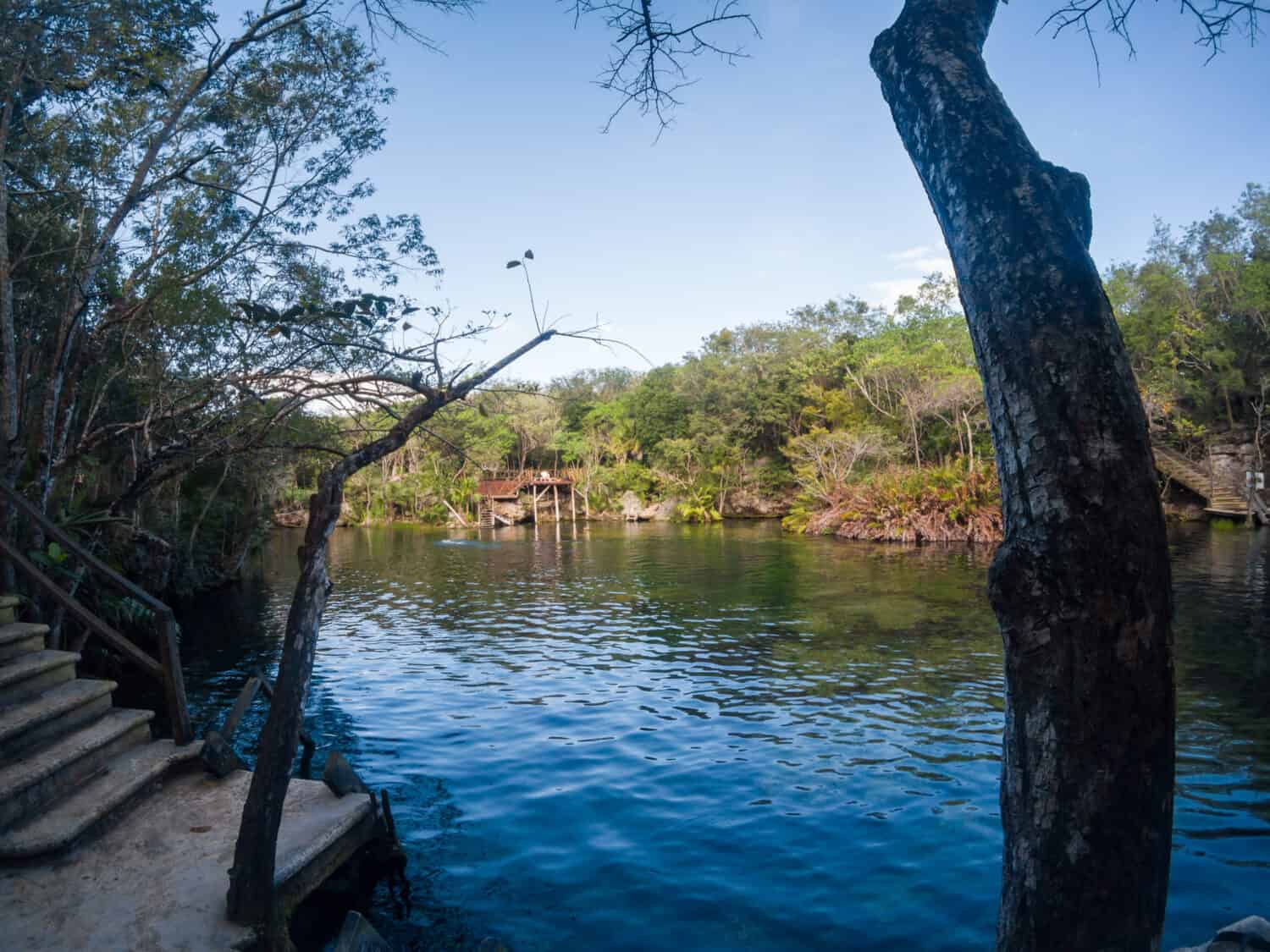
Cenote Jardin del Eden in Tulum translates to “Garden of Eden.”
©Adam Melnyk/Shutterstock.com
The beautiful cenote Jardin del Eden is near Playa del Carmen. The crystal-clear waters contain caves, surrounded by the lush rainforest. It is a large cenote that is very deep in some spots, so you should be a strong swimmer if you jump in the freshwater. Because it is an open cenote, Jardin del Eden is great for scuba diving and snorkeling.
2. Cenote Sac Actun
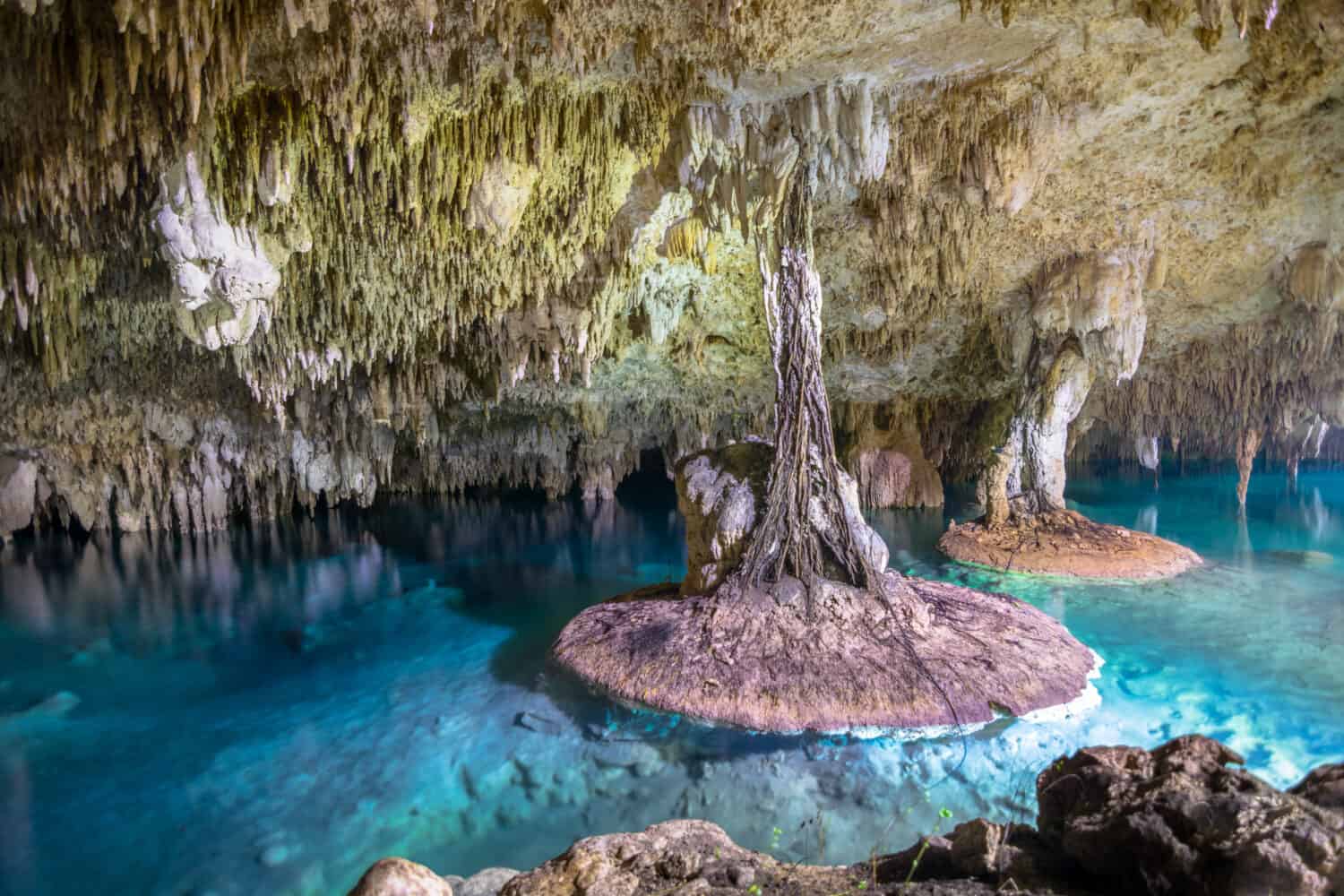
There is a dry passage between Dos Ojos and the Sac Actun cave systems.
©Nido Huebl/Shutterstock.com
Known locally as “Cenote Pet Cemetery,” its real Mayan name is Sac Actun, meaning “white cave.” Cenote Sac Actun is an underwater paradise perfect for snorkeling with its shallow and warm water. Due to it being underground, the water temperature is around 68-70 degrees Fahrenheit. Divers wear wetsuits, as the water can feel chilly over long periods of time. Scuba diving in the cave requires training, whereas snorkeling in the crystal water is for everyone.
3. Yal Ku Lagoon and Cenote
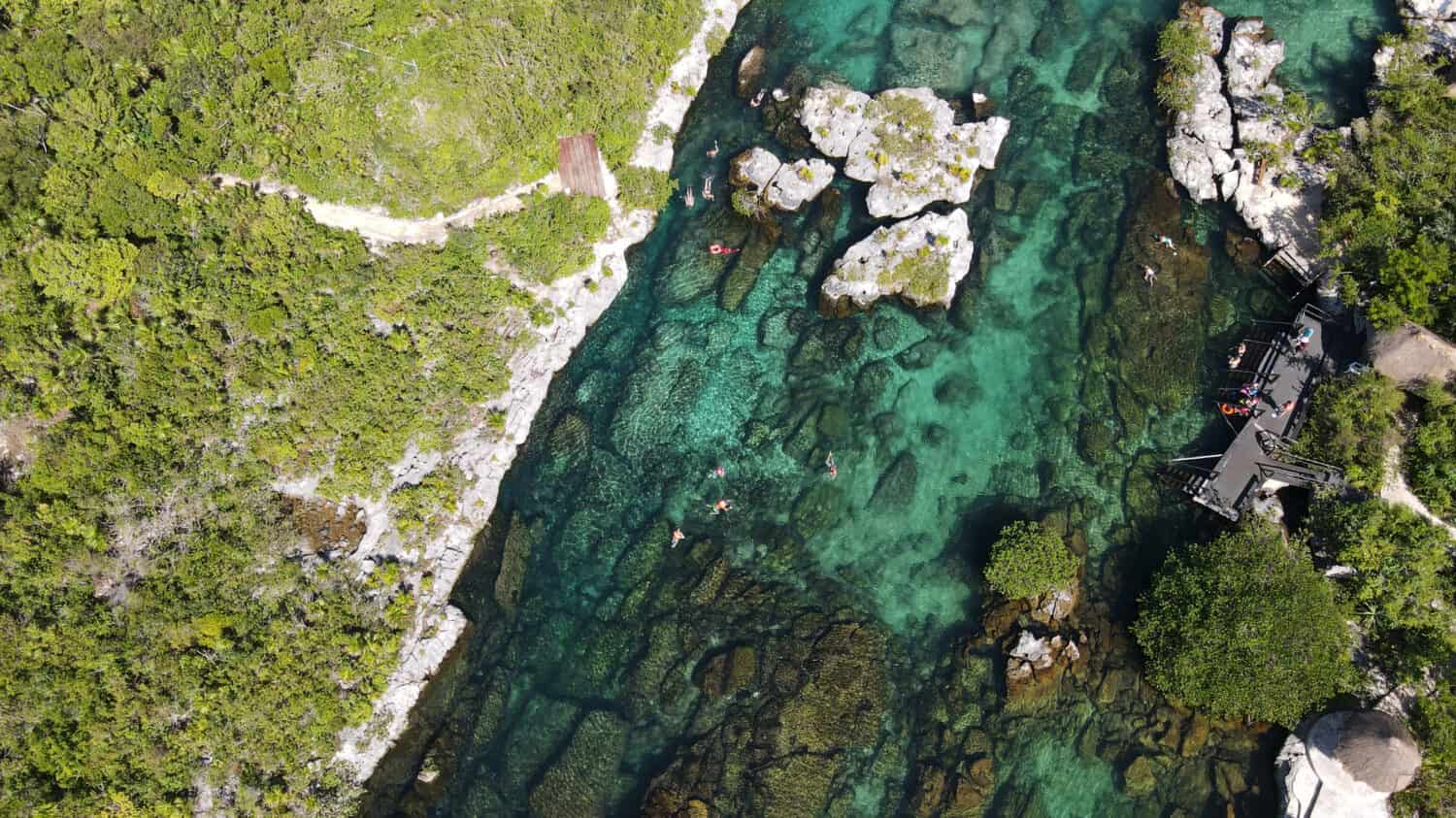
The Yal Ku lagoon and cenote are the perfect family day trip.
©Nathan zweers/Shutterstock.com
Freshwater and saltwater mix in the Yal Ku cenote and lagoon creating a peaceful environment that is great for beginner snorkelers or families seeking calm waters. Due to the brackish water, many species of both freshwater and saltwater fish live in the cenote. Mangroves surround the pristine water, as do beautiful natural rock formations, which help keep the water calm. Visitors can expect to see sea turtles, a variety of rays, barracudas, and an array of tropical fish.
4. Cenote Dos Ojos
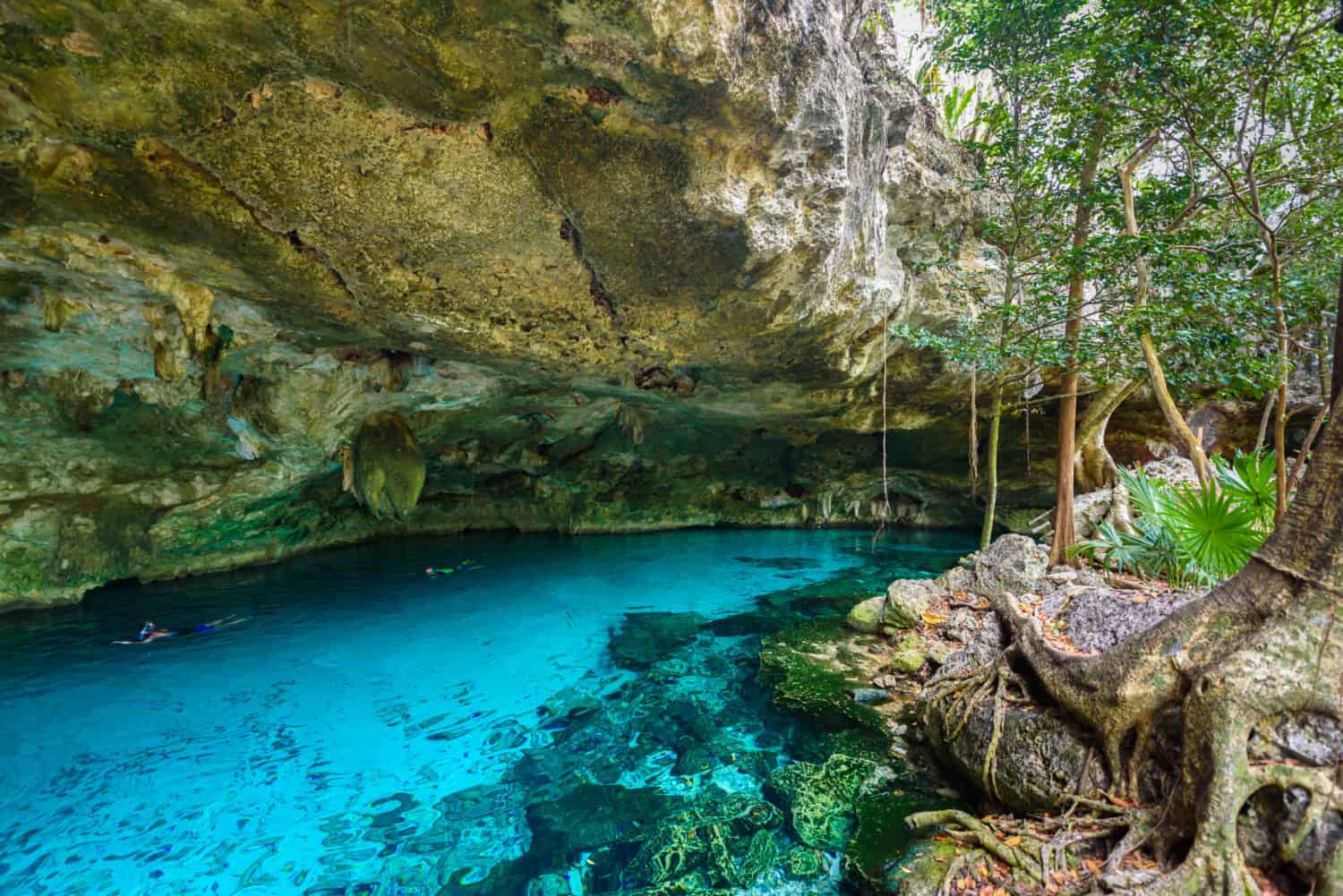
The cenote’s name translates to “Two Eyes Cenote.”
©Simon Dannhauer/Shutterstock.com
Cenote Dos Ojos is two swimming holes connected by a 400-meter passageway. It has a deep underwater cave passage at 118 meters and is always a warm 75-78 degrees throughout the year. The warm water and amazing caves make the cenote a diver’s paradise.
5. Cenote Caracol
Cenote Caracol is a remote swimming hole. As part of the Sac Actun Cave System, Cenote Caracol translates to “Snail Cenote.” The cenote is off-the-beaten-path, and the serene subterranean waters are perfect for beginner divers. The stalactites, roots, and bats hanging from the roof transport swimmers to another world. The hidden oasis is the perfect place to cool off from the hot Mexican sun.
6. Cenote Azul
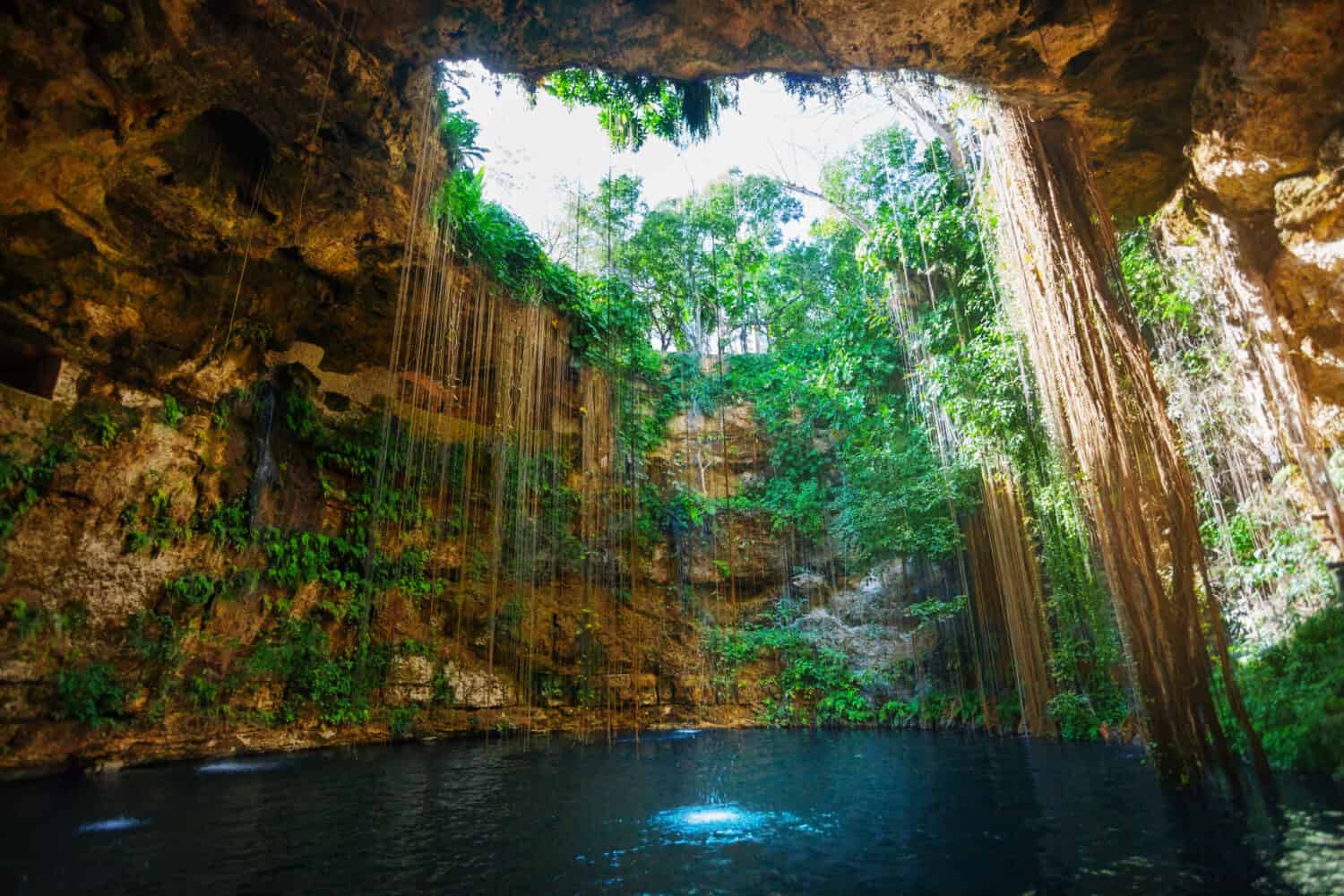
The cenote translates to “Blue Cenote,” and is an open-air swimming oasis, facing the clear blue sky.
©Sergey Novikov/Shutterstock.com
Cenote Azul stays around 75 degrees Fahrenheit, making it the ideal refreshing dip to escape the southern sun. There are shallow parts of the cenote that are great for swimming with kids, and deeper places, about 15 feet, where adults can jump off the rocks into the crystal water. It is a convenient swimming hole for families to visit due to easy access and safe waters.
7. El Gran Cenote
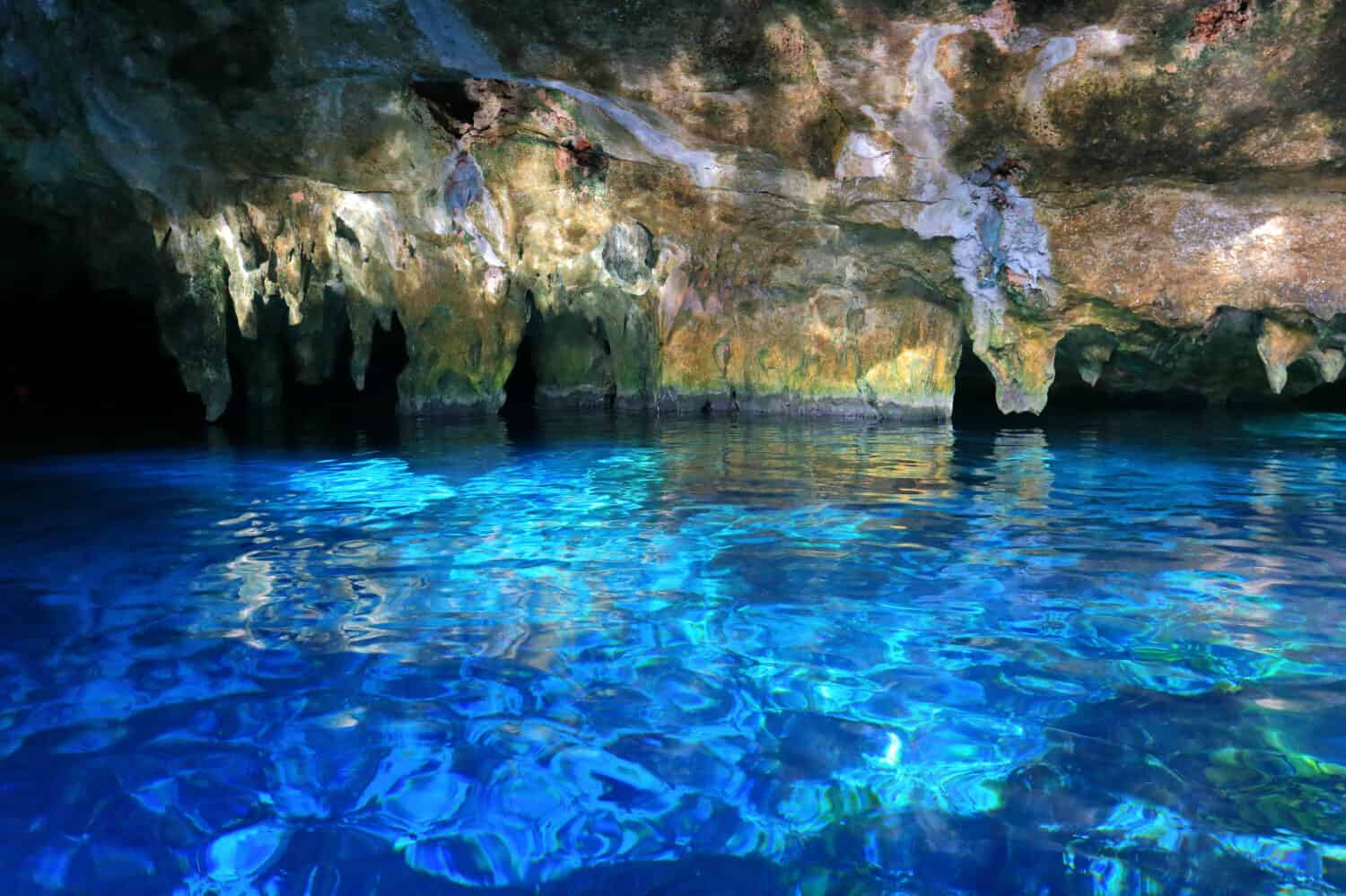
El Gran Cenote’s unique scenery, expansive caves, and winding boardwalks put it at the top of the list.
©Kazuki Yamakawa/Shutterstock.com
As the name implies, El Gran Cenote is a large swimming hole surrounded by jungle greenery. The water at this cenote is so clear that wildlife is seen from the surface. No deep diving needed here! Snorkelers often spot blue crabs and turtles as they explore the white-walled caves of this massive cenote.
8. Cenote Calavera

Calavera is the Spanish word for skull, and the cenote resembles a skull when viewed from above.
©Mala Iryna/Shutterstock.com
Calavera is the Spanish word for skull, and the cenote resembles a skull when viewed from above. It has three entrances: one large hole and two smaller ones. The three together make up the eyes and mouth of the “skull.” Calavera Cenote is nicknamed the “Temple of Doom” because there is a small ledge in the cenote that resembles an altar or small temple. Calavera is part of the same cave system as the Sac Actun Cenote and is also a mix of freshwater and saltwater. The swimming hole is perfect for thrill seekers, as it lends itself to cliff jumping.
9. Cenote Angelita
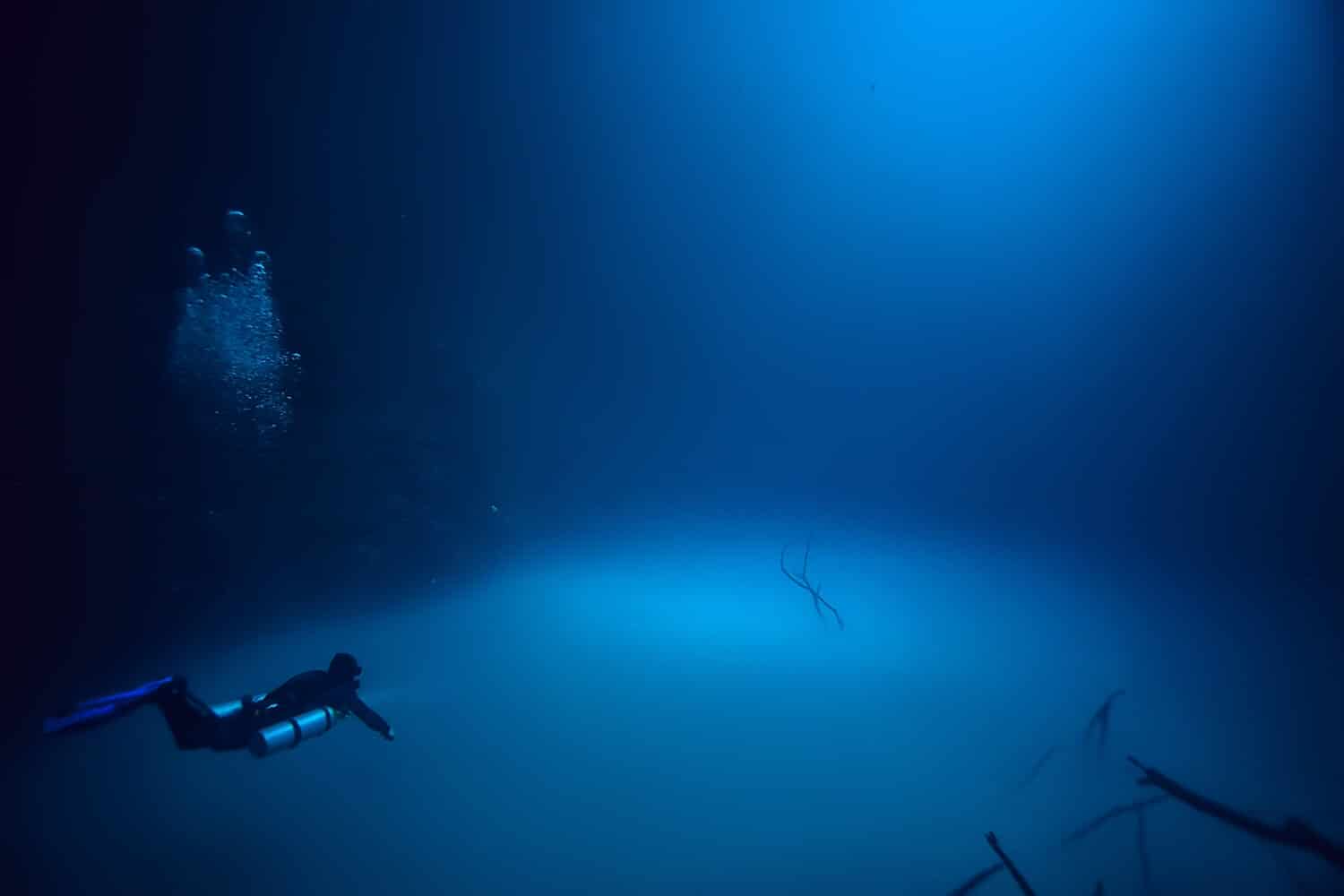
Known for its layer of hydrogen sulfide, Cenote Angelita is a magical pool for divers.
©Kichigin/Shutterstock.com
Cenote Angelita translates to “little angel” cenote. The cenote is in the lush, remote jungle, and the deep blue water is a scuba diver’s dream. The mixing of the salt and fresh water, along with the absence of oxygen, create hydrogen sulfide, which creates an eerie underwater cloud. Divers say the depths are reminiscent of a riverbed because of the barely visible branches and leaves.
10. Cenotes Yax-Muul and Sac Tuunich
The two cenotes Yax-Muul and Sac Tuunich are wonderful waterholes to escape the hustle and bustle. These cenotes are underground and are less crowded than others in the area. Yax-Muul’s crystal waters reflect colorful lights from the limestone and ceiling. And foliage and lush jungle plants surround Sac Tuunich. Both cenotes’ waters are shallow and great for floating, and their shade lets visitors enjoy the cool freshwater.
11. Cenote Cristal and Cenote Escondido
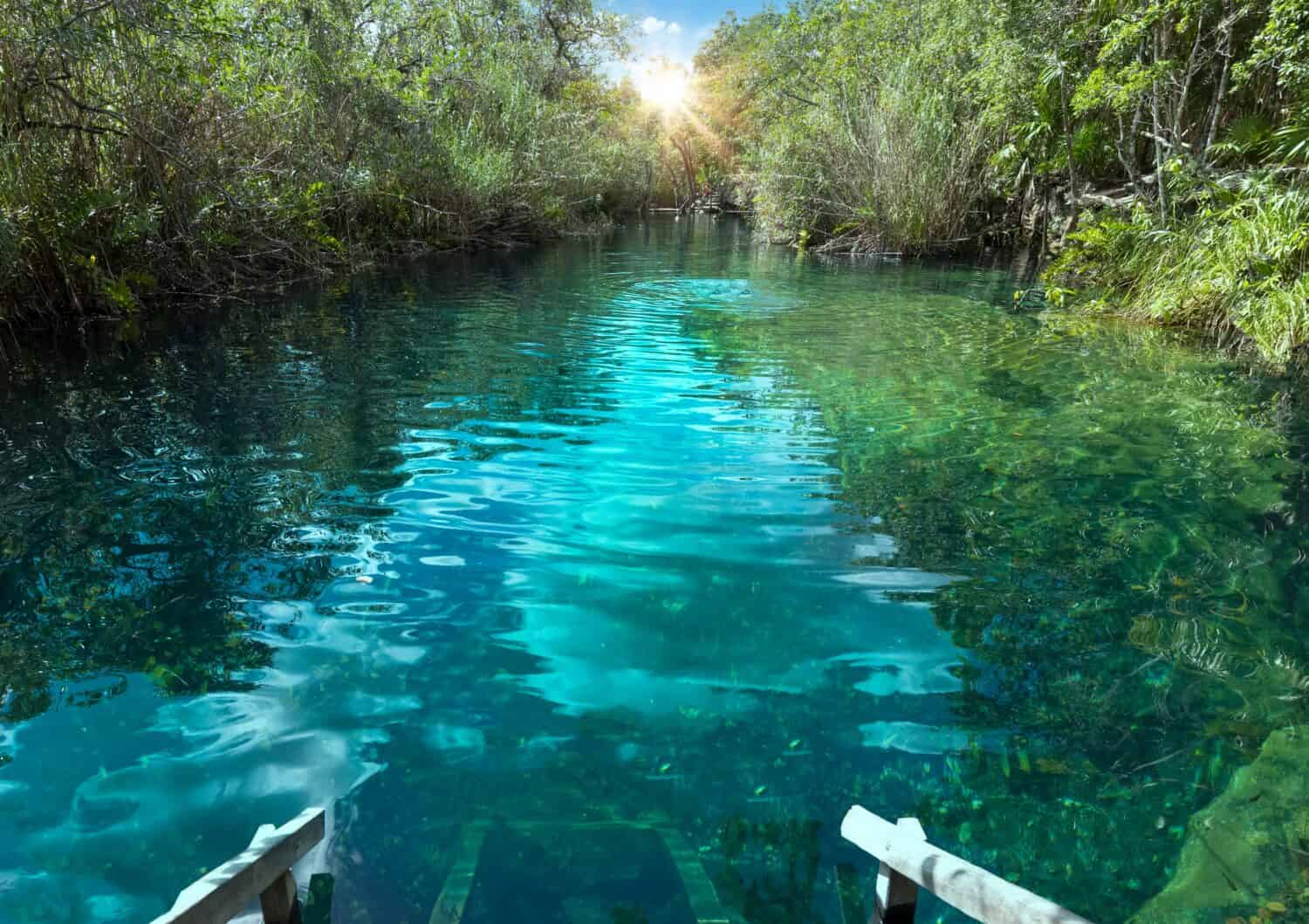
The Mayans relayed on Cenote Cristal and Cenote Escondido during the Caste War.
©eskystudio/Shutterstock.com
Cenote Cristal is on the left side of the highway and Cenote Escondido is on the right, joined by an underwater tunnel. If visitors want to scuba dive, they must be certified. Swimmers and snorkelers are also welcome. Cenote Cristal translates to “Crystal Cenote,” which describes the swimming hole’s emerald and turquoise fresh water. Beautiful jungles and vegetation surround the open cenotes.
12. Kaan Luum Lagoon

The magical Kaan Luum Lagoon is one of Tulum’s best-kept secrets.
©Juan Briseno/Shutterstock.com
Kaan Luum Lagoon differs from other cenotes as it looks more like a section of the Caribbean Sea than a swimming hole. The water is translucent, shallow, and turquoise on the edges, great for swimmers who want to enjoy the cenote. The dark blue center contains currents. In fact, this area is roped off, as the current can pull swimmers under.
13. Cenote El Pit
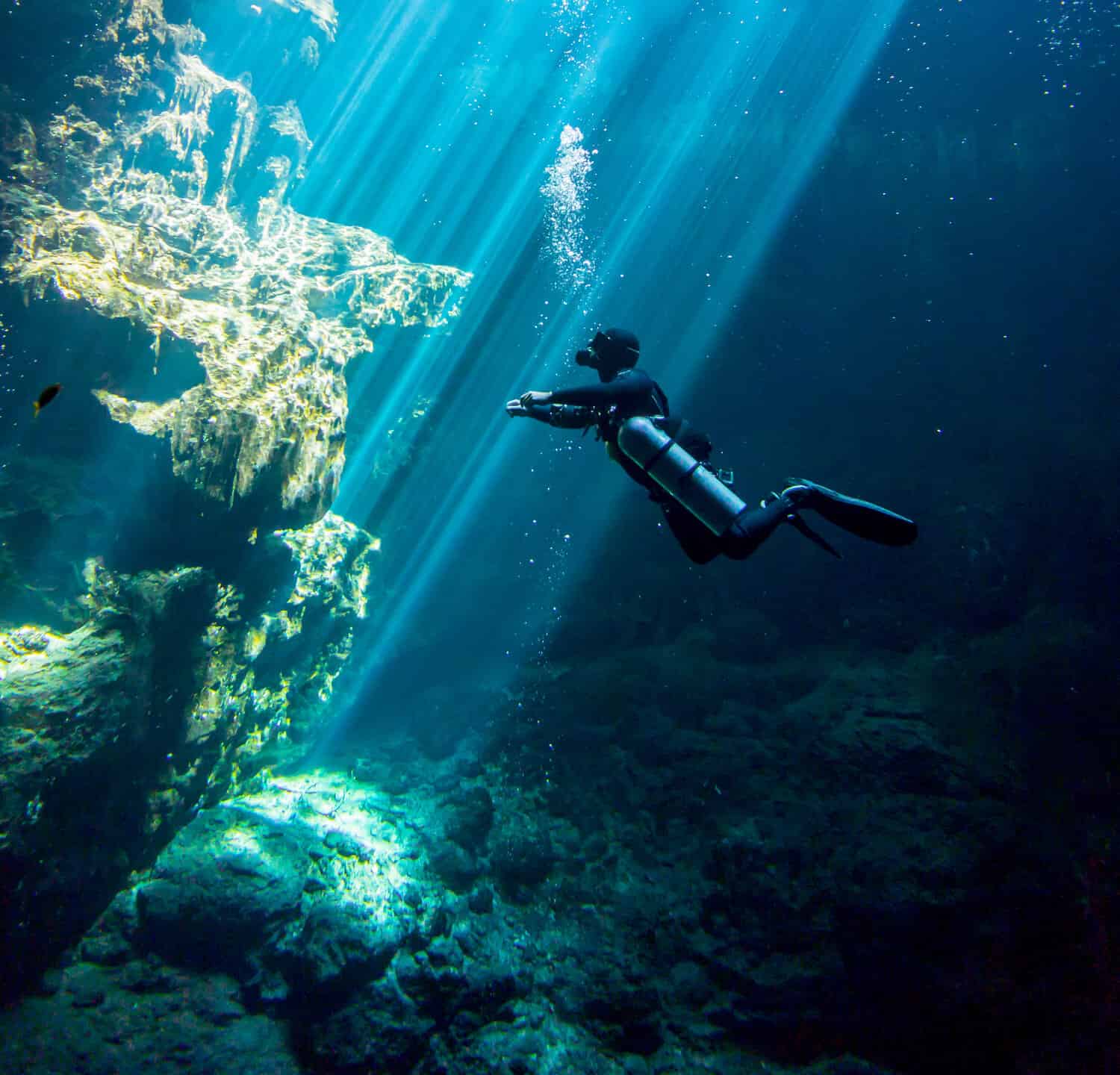
The euphoric dive site is the deepest part of the Dos Ojos.
©Sabrina Inderbitzi/Shutterstock.com
Cenote El Pit is located in Dos Ojos Natural Park and is part of the system Sac Actun. At the beginning of the dive, there is a halocline, a layer where the freshwater and saltwater separate. A couple more feet down is a hydrogen sulfide layer. This layer has trees and leaves coming through the “cloud,” similar to the Cenote Angelita. Due to its depth, the cenote is recommended for advanced divers.
14. Cenote Manati
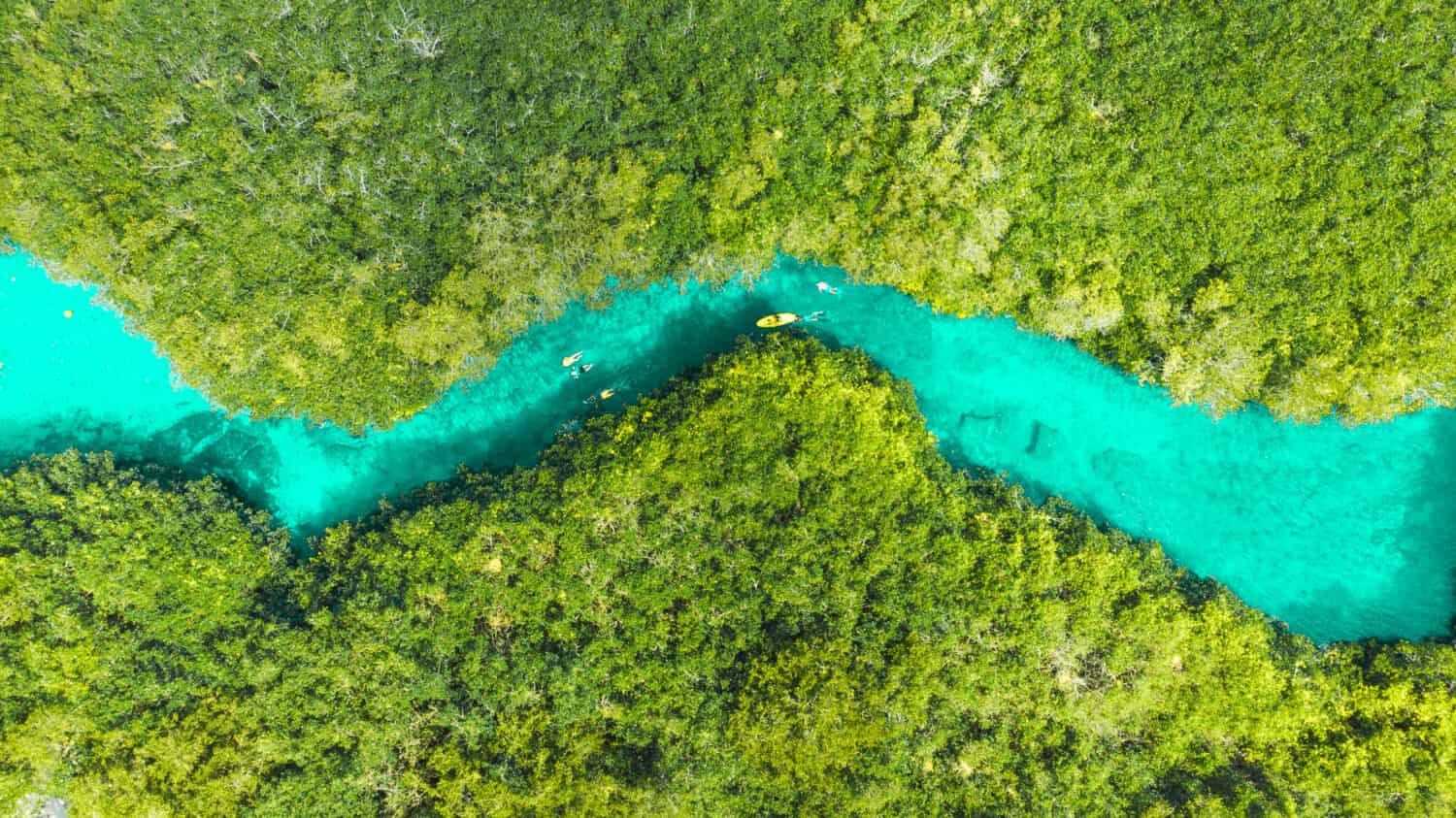
Cenote Manati is shaped like a snake that disappears into the mangroves.
©Tom Ha/Shutterstock.com
Casa Cenote Tulum, or Cenote Manati, is close to the ocean in the middle of the mangroves. It was once called Cenote Manati due to the manatees that frequented its waters. However, these animals are rarely seen here today. Now, it is called Casa Cenote Tulum due to the restaurant, Casa Cenote, that sits in front of its entrance. It is a great cenote for both advanced and novice divers. The oasis is the largest open cenote and its emerald waters are inviting to swimmers.
15. Cenotes Casa Tortuga
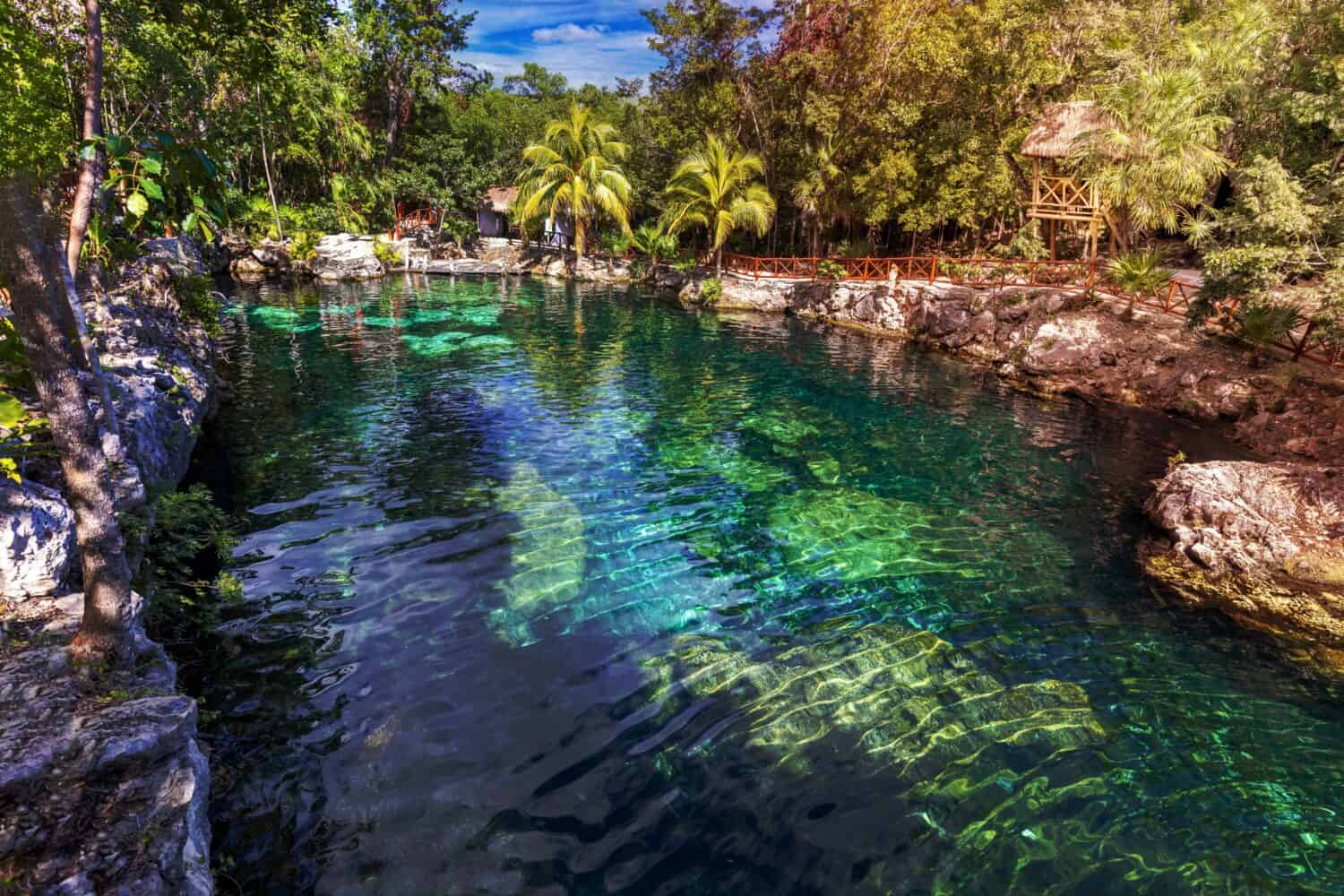
The four cenotes, three semi-open and one fully open, are in the middle of the Mayan jungle.
©vandadorescu/Shutterstock.com
Cenotes Casa Tortuga is a newer cenote to Tulum. It is comprised of four separate pools: Cenote Wisho, Cenote Campana, Cenote Jaguar, and Cenote Tres Zapotes. They offer immersive caves and semi-open caverns for swimmers and divers. The cenotes are filled with ancient rock formations, fossils, stalagmites, and stalactites. Visitors can admire bats, flora, fish, and birds in this little piece of paradise.
16. Cenote Xunaan-Ha
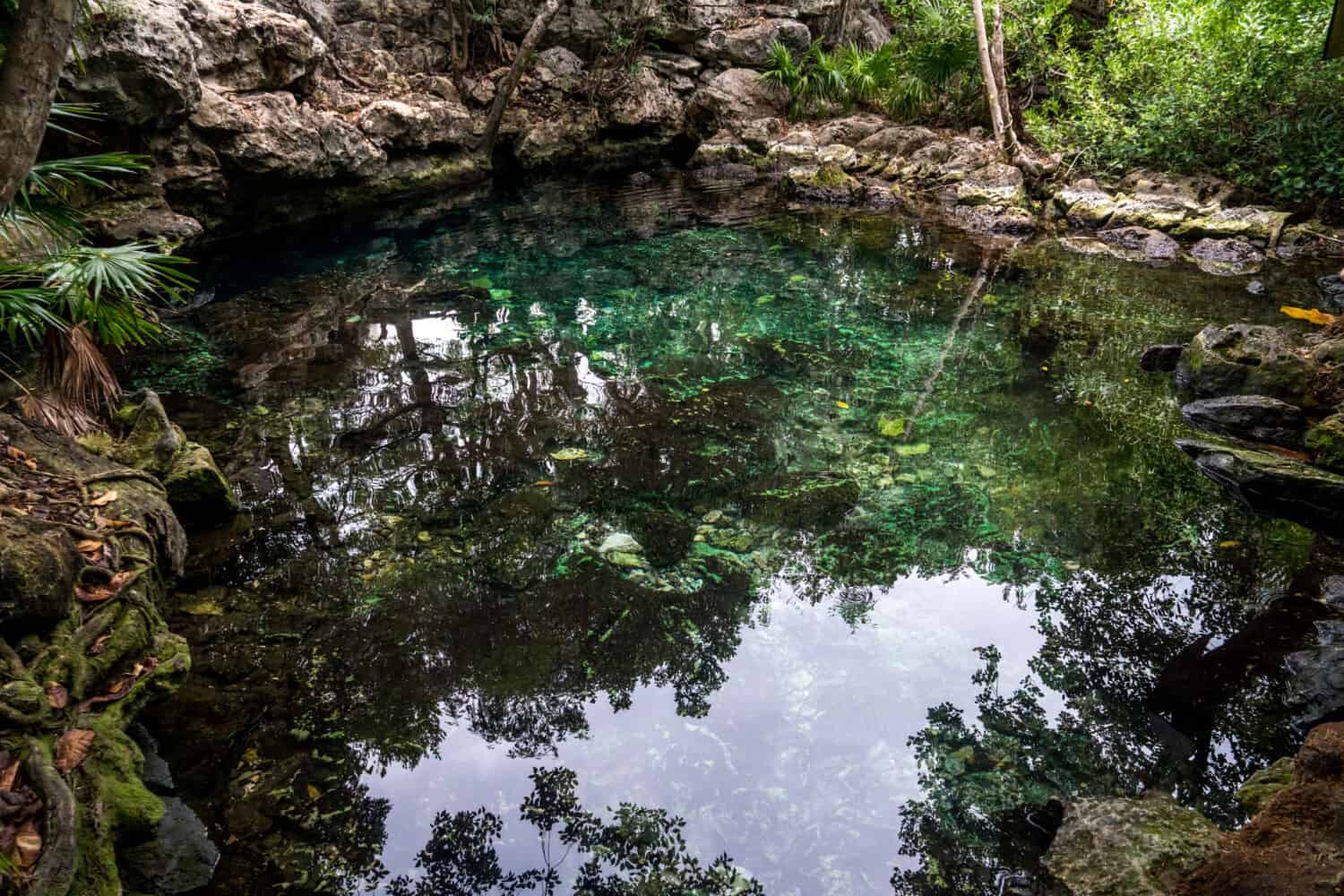
Cenote Xunaan-Ha is the fourth-longest cave system in the Riviera Maya.
©Christopher Mazmanian/Shutterstock.com
Due to the depth and length of this cenote, divers at Cenote Xuaan-Ha should be advanced. However, the pristine waters are safe for snorkelers, too. Cenote Xunaan-Ha translates to “Goddess of Water cenote.” The crystalline water is shallow and great for swimming. There is a platform for jumping off, as well as a zipline. Exotic birds visit the cenote as well. The large ferns off to its side and its lush forest make it a great place to nest.
These hidden cenotes allow visitors to swim and dive in crisp mineral-rich waters. The magical caves and pools under a jungle-framed sky make swimmers feel lost in another time and place. The Mayans saw cenotes as portals to the gods, and it is not hard to see why. The gorgeous waters provide a step back in time, as sunlight hits the rock walls, and the jungles shade the sacred pools.
Summary of The 16 Best Tulum Swimming Holes
| Swimming Hole | |
|---|---|
| 1 | Jardin del Eden Cenote |
| 2 | Cenote Sac Actun |
| 3 | Yal Ku Lagoon and Cenote |
| 4 | Cenote Dos Ojos |
| 5 | Cenote Caracol |
| 6 | Cenote Azul |
| 7 | El Gran Cenote |
| 8 | Cenote Calavera |
| 9 | Cenote Angelita |
| 10 | Cenotes Yax-Muul and Sac Tuunich |
| 11 | Cenote Cristal and Cenote Escondido |
| 12 | Kaan Luum Lagoon |
| 13 | Cenote El Pit |
| 14 | Cenote Manati |
| 15 | Cenotes Casa Tortuga |
| 16 | Cenote Xunaan-Ha |
The photo featured at the top of this post is © eskystudio/Shutterstock.com
Thank you for reading! Have some feedback for us? Contact the AZ Animals editorial team.






